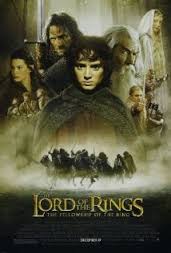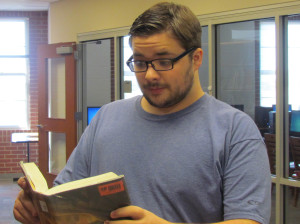Franchise Frenzy: The Lord of the Rings Trilogy

The Lord of the Rings trilogy is one of the few movies that has remained a beloved movie for multiple generations.
January 31, 2014
Every other Friday, The Red Ledger’s delves into one of Hollywood’s most beloved franchises and take a look at it’s quality, subtext, cultural impact and why it’s resonated as well as it has.
Lord of the Rings: Fellowship of The Rings, The Two Towers, Return of The King
Most Memorable Line: “You….shall not…PASS!!!”
It’s impressive how much of a benchmark this trilogy of films has remained over the years. In fact, I don’t think there’s any kind of franchise that has influenced Hollywood more this century (so far) than the saga of Frodo Baggins. Every single film series wants to match the epicness of Lord of the Rings, yet few can ever hope to even get a quarter of the brilliance Peter Jackson masterfully created.
Perhaps the most wondrous thing Peter Jackson managed to come up with in this series is making each film stand on it’s own as a piece of cinematic gloriousness. Now, each film does hinge on the ones that came before and after it, but each movie has it’s own attributes and moments that make it stand out on it’s own. To boot, they each avoid problems that get associated with certain films in a franchise; the first one doesn’t suffer from too much exposition, The Two Towers isn’t as repetitive and the finale is far from underwhelming like other third films (howdy original Spider-Man movies).
It’s also interesting to see how the visual effects landscape was influenced by what was accomplished. Now, motion-capture, which involves an actor putting on a special suit which allows his movements to be put into a CGI character, is be a popular feature of moviemaking today, but The Two Towers was the one to really popularize the method, with Motion-Capture being used in most modern day blockbusters (for instance, it’ll be a major part of upcoming films Teenage Mutant Ninja Turtles and Guardians of The Galaxy). Simultaneously innovating and awe-inspiring, the visuals of this trilogy were like none that came before it or after. But even more dazzling than those landmark effects was a little character called Gollum.
Gollum may be the heart and soul of the film series, and not just because he’s easily the most famous person from the trilogy (sorry Gandalf and Legolas!), but due to the fact that he represents the series recurring theme of tragedy. Throughout all three movies, tragedy seems to be the crux of major events that occur, whether it’s Bilbo handing off the dangerous ring to an unprepared Frodo and Gandalf sacrificing himself for the Fellowship. Gollum however, represents the tragedy of corruption, as the ring turns him into a hideous beast who lives and breathes for the circular object. This leads to being a nice parallel for life itself, where temptations (like The One Ring) run rampant and even the noblest of creatures can become treacherous at the drop of a hat.
But it isn’t just thoughts of corruption that run rampant throughout this epic saga, as plenty of fun action sequences similarly abound. Whether it’s a ghost army, Gimli and Legolas competing for highest amount of kills (“That doesn’t count!”) or trees attacking fortresses, spectacle is one of the series’ most successful elements, especially when it involves those terrific eagles, who really do save everybody’s bacon in every cinematic depiction of Middle-Earth.
Since the days of Hobbits and wizards, Peter Jackson has stumbled along a bit, making the noble but flawed King Kong and the mixedly-received The Lovely Bones. His Hobbit films have been much better (The Desolation of Smaug in particular was fantastic), but these Lord of The Rings films remain untouchable in terms of quality.
I think they remain important to Jackson for one big reason; they represent his life as a filmmaker. Prior to being given the chance to adapt J.R.R. Tolkien’s prose, he was a maker of horror films and more known for blood and guts than anything truly extraordinary. But like how Frodo was chosen to embark on a long and noble quest to destroy The One Ring, Jackson was chosen to embark on a long and noble quest to bring these characters to life. Like Frodo, nobody was sure Jackson could pull off such a feat, but he did it marvelously. Just like us viewers, Jackson see’s himself in these characters, and again, just like us, will likely never forget the impact these wonderful films have had on him.




Anonymous • Feb 3, 2014 at 9:09 am
*takes out giant elephant-thing, rides it to the ground in the most epic way possible*
…”That still only counts as one!”
Sample text • Jan 31, 2014 at 1:42 pm
Seriousy, what was wrong with Rankin-Bass LotR?